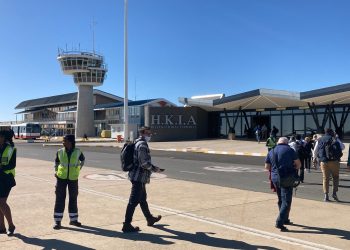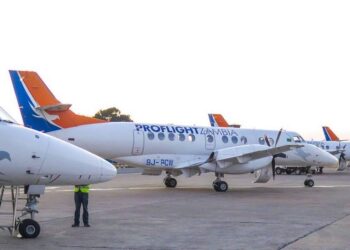
Namibia’s coastal region witnessed a surge in tourism activity in September 2024, with an occupancy rate of 74.45%, marking the highest occupancy rate recorded across the country.
The growth was driven by a variety of social, sporting and leisure events, including annual sports marathons and regional festivals.
In contrast, the central region saw the lowest occupancy at 43.89%, despite hosting significant international and domestic sporting events.
According to Simonis Storm Securities Junior Economist Almandro Jansen, this anomaly may reflect tourists’ preference for the coastal and rural areas, which offer more varied leisure experiences compared to the urban centres in the central region.
In September 2024, the national occupancy rate across hospitality establishments improved to 65.5%, up from 63.02% in August 2024.
“This figure also exceeded the 65.18% recorded in September 2023, although it remained below the 67.98% achieved in September 2019, possibly due to lingering impacts from rising travel costs and more stringent visa regulations,” he noted.
Local travel experienced a notable decline, with Namibian visitors occupying fewer establishments, dropping from 17.5% in August to 14.6% in September 2024.
“This downward shift suggests possible challenges in the domestic tourism sector, perhaps linked to seasonal factors or a shift in travel preferences,” said Jansen.
On the other hand, South African tourists showed increased activity, with their share rising from 3.7% to 5.5% in September, reflecting a growing interest in Namibia’s attractions during this period.
“Visitors from the rest of Africa also experienced a slight drop, settling at 0.4% in September. In contrast, European tourists, who have consistently dominated Namibia’s tourism market, increased from 70.3% in August to 71.8% in September,” he added.
Jansen said this trend could indicate a recovery in European travel post-summer or a reflection of Namibia’s appeal during the late summer and early autumn months in Europe.
“European travel tends to show strong seasonal patterns, and Namibia remains a key destination due to its relatively stable environment and natural attractions,” he said.
Regional trends were mixed as the Middle East saw a slight decline from 0.26% to 0.1%, possibly due to political and economic factors.
Asian visitors increased from 1.69% to 1.9%, showing growing interest. South America’s share dropped from 0.63% to 0.3%, potentially due to fewer connections or economic issues.
North American tourists rose from 3.68% to 4.4%, indicating continued interest, while visitors from other regions increased slightly from 0.55% to 0.9%.
Jansen these figures suggest that Namibia’s tourism sector remains dependent on European visitors, while the shifts in other regions indicate varying degrees of interest.
According to the CEO of the Hospitality Association of Namibia (HAN), “the slight decline in the third quarter could be linked to major international sporting events in Europe during August.â€
While these events may explain some of the fluctuations, we will need to consider broader factors, including rising flight costs, stricter visa regulations, and global political dynamics, such as the Middle East crisis.
“There is also growing concern about increasing local crime rates, which could deter tourists if not managed effectively. As we await the full results for 2024, these factors will likely shape the outlook for Namibia’s tourism industry in the months ahead,” he said.











